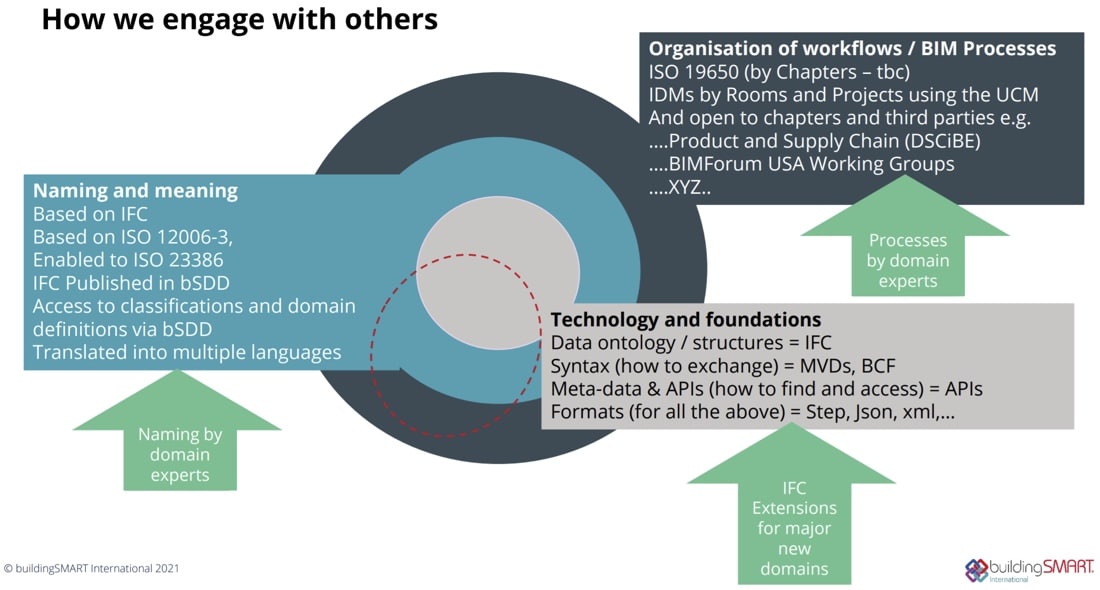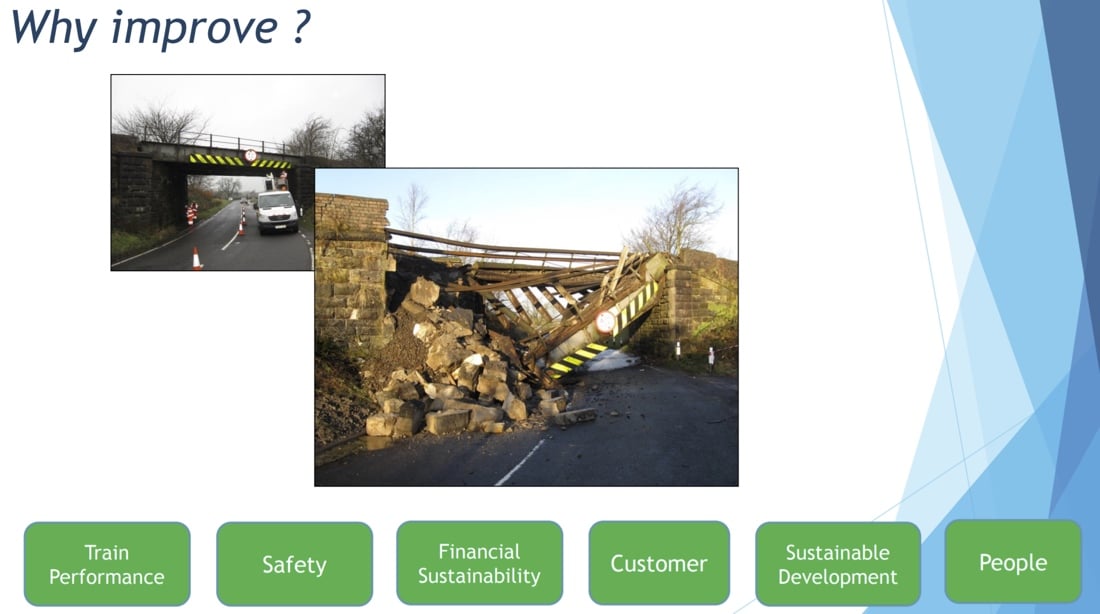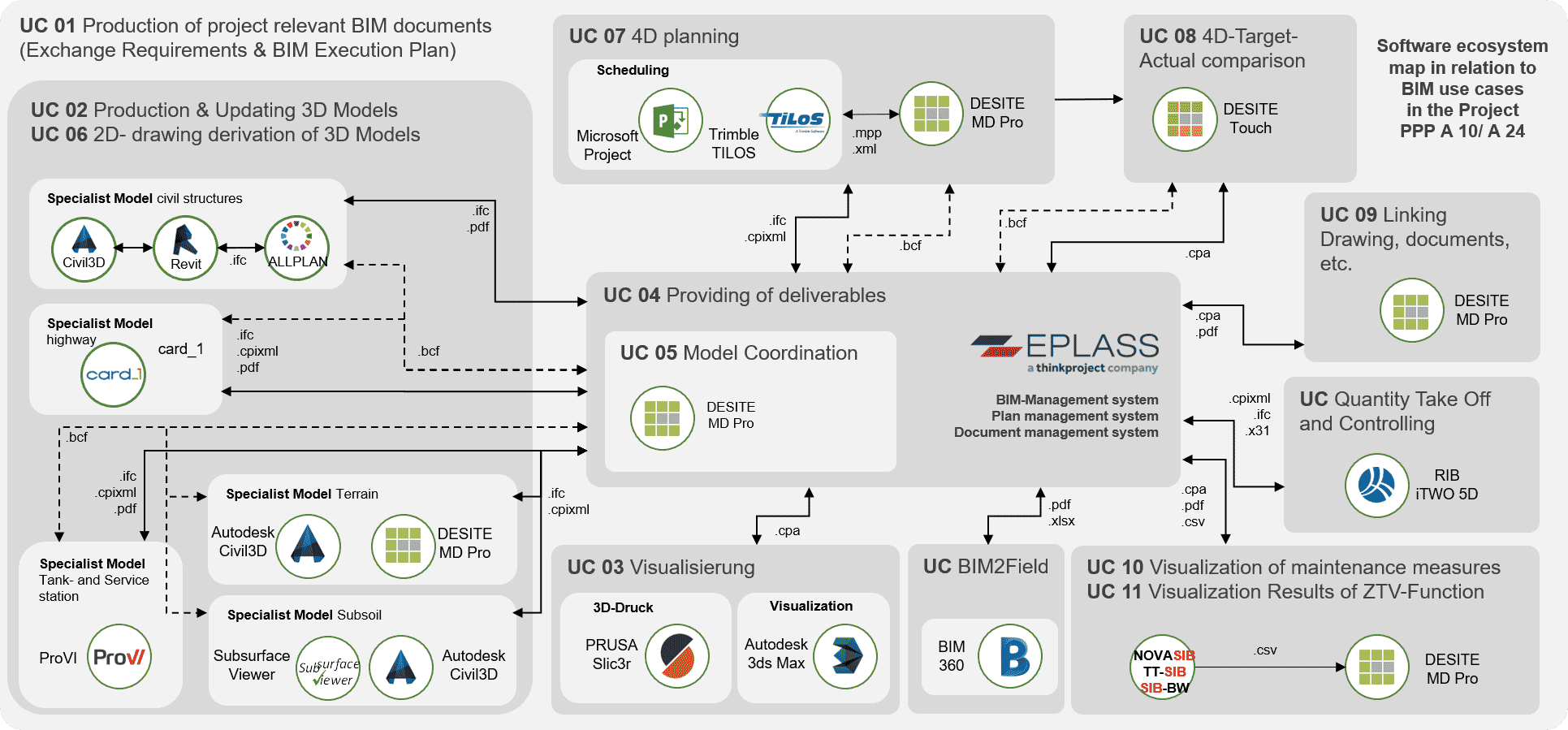The buildingSMART International Virtual Summit – March 2021

The buildingSMART International Virtual Summit has concluded its 3rd edition for Spring 2021. This program was brought together with the buildingSMART Switzerland Chapter to deliver their _xCH21 Digital Construction Event. The event was comprised of an opening day plenary, a dedicated Swiss roundtables day, German masterclasses, bSI keynotes, Room days, sponsor-focused sessions, and more. There were exhibitor booths, networking forums, and a ten-day agenda spanning the entire built asset industry. The full event write-up can be found below.
DAY ONE: OPENING PLENARY
The buildingSMART International Virtual Summit and Swiss Digital Construction Event _xCH21 started with welcomes and introductions from both bSI and the Swiss chapter. Keynotes from the buildingSMART International Management Office. The session was titled “An update from buildingSMART International” and there was a welcome from Patrick MacLeamy, Chairman, a ‘Chief Executive Update’ from Richard Petrie, Chief Executive, a ‘Solutions and Standards Program’ presentation from Richard Kelly, Operations Director, a ‘Technical Update’ from Léon van Berlo, Technical Director and finally a ‘Marketing Update’ from Aidan Mercer, Marketing Director. These presentations provided the community with progress reports, updates and highlighted the value of open data and openBIM®. There were some news alerts for the audience including:
- A framework for interoperability
- Update to the bSI Process
- Developments of the bSDD
- New logos and brand guideline
- Use Case Management Tool launch
- Opening of the Awards Program

The following session was titled “Sustainability through best practice” which brought together some excellent perspectives on the topics of digital transformation and sustainability. Anna-Riitta Kallinen and Pekka Virkamäki - Ministry of the Environment of Finland provided an opening keynote highlighting the national programs being rolled out to address the need to reduce carbon waste, improve AEC workflows, and to better align the whole industry in Finland. IFC is proposed to be made an official certification approach for archiving purposes by Autumn. The next presenter was Kay Killman – Head of Europe, GBCI Europe who talked about the role of LEED certification as a method to improve the built environment. Kay focused on the need to develop open and agile solutions to deal with the growing demand. Kay highlighted the role of standards in meeting changing and growing demands.

The next presentation was from Dr. Chris Luebkeman - Head of Strategic Foresight, ETH Zürich who talked about the responsibility we have in making a difference to the planet today. “We have to embrace changes” to deal with global climate challenges was a clear statement. The next presenter was Jon Könz - Head of Smart Infrastructure Industry Affairs, Siemens who emphasized the goals of being carbon neutral by 2050. Jon highlighted the urgency and how BIM and digital transformation can help us meet ‘Green Deal’ goals. One approach to achieve our goals is to align with “openBIM” and to have a common data approach. The next presentation was from Maike Stroetmann - Head of BIM Department, Bouygues Energies & Services. Maike talked about the challenges in construction as an industry and what can be improved with a “circular” approach. One method proposed for managing this is to use modular pre-fabrication for a better circular economy, but using more sustainable products, better BIM-driven approaches and better repetition helps deliver more results. For example, 90% of pieces that go into the construction process can be pre-designed and require less intervention when in operation. The final presenter in the session was Michael Dobler - Head of Global Account Management, Schindler. Michael provided a perspective from Schindler and their approach to sustainability and talked about the growing urban demand. He shared statistics showing the rise of the middle class, more single households, and migration to cities which all need sustainable solutions to support this.
The third session of the day was titled “buildingSMART Solutions and Standards in Use” with Léon van Berlo providing context to the importance of end-users, which drives what is developed at buildingSMART. Léon shared early findings from the industry survey focused on the IFC 2x3 standard. Next up was Pasi Paasiala - Principal Architect, Solibri who talked about “IFC in its natural habitat”. Pasi shared a variety of case studies showing the importance of open and shareable data. Pasi was followed by Thomas Tschickardt - Digital Construction Manager, Wayss & Freytag Ingenieurbau AG who shared his project submission from last year’s awards program. Thomas shared the benefits of using IFC4 as a core standard for infrastructure projects in Germany.
Software Ecosystem - Thomas Tschickardt
Thomas Flannery, Digital Engineering Lead, Lendlease then provided an update on their approach to open standards for real-world projects. And finally, Ronald Bergs - Director / Managing Partner at Gobar Consulting Group and Anouk van Otterlo - BIM & Linked data consultant, BASED, shared how to use bSDD classifications and export functions in 4.3 and demonstrated their proof of concept for the municipality of Amsterdam.
The final session for the opening plenary was titled “The Rise of Digitization”. The first presentation was from Rita Sanfilippo - Head of BIM, Lombardi who talked about how 66 years of innovation and adopting new technologies has helped them deliver global projects.

Dalith Steiger - Co-founder and Managing Partner, SwissCognitive talked about the opportunity for AI in buildings and the current approach which is not as widespread as it should be. Matthias Wasem - Managing Partner, BIM Facility AG presented the urgent need to deal with construction and real estate waste. Matthias talked about the importance of open standards and the opportunity with digital twins. Frédéric Gal - Director of Engineering, Bouygues Construction talked about a vision for a more collaborative and industrial focus. Frédéric showed the benefits of learning from other industries as something that can be applied to the AEC industry. Finally, Stefan Reiser - Project Lead Production, CRB talked about the benefit of open standards in the context of both national and international standards. Stefan reiterated that CRB and bSI are well placed to support one another.
DAY TWO: SWISS ROUNDTABLES
Day two was the dedicated Swiss Digital Construction Event _xCH21 Roundtable’s day, covering four major topics. They were:
- Digital supply chain and circular economy
- Digital Twins and automation
- Collaboration with openBIM
- Industry, education, and standards
All roundtables went live inside a 3D model, with a moderator and panellists contributing to a lively debate delivered or translated into three different languages: German, English, and French. Below are some statistics of the production:
- Delivered in a fully 3D model
- Over 9 hours of live feed
- 64 live feeds
- 56 cameras in the studio
- 44 panellists
- 20 videos delivered
- 4 moderators
- 4 translators
- 4 studio operators
With thanks to www.swisscognitive.ch for the production and delivery.
DAY THREE: SWISS MASTERCLASSES / bSI KEYNOTES
Day three included four German-speaking masterclasses:
- “Fundamentale Branchenstandards für Bauherren & Eigentümer für eine zielgerichtete Digitalisierung” presented by CADMEC AG
- “Digitale Zwillinge in der bebauten Umwelt als Voraussetzung für Just-in-Time-Produktion” presented by Amberg Group
- “Kreislaufwirtschaft in der Immobilienpraxis” presented by Swiss Prime Site
- “Reduktion der Umweltauswirkungen aus Baustoffen in Gebäuden mittels BIM-Anwendungen” presented by Lignum / Fachhochschule Nordwestschweiz
Running in parallel were the bSI keynotes, starting with a session titled “Strategic Thinking: Looking at the Bigger Picture” which was hosted by Richard Kelly who shared updates from what’s been happening at buildingSMART, and the heightened need to focus on asset management. The focus at buildingSMART is to develop more strategic working groups as a way of developing content into the Rooms. Bart Brink - Global Director Digital Twin, Royal HaskoningDHV, shared a vision on how they are delivering complex solutions to solve major societal challenges with a presentation titled ‘Overcoming sustainability challenges with digital twins’. There was also an update on the progress from The buildingSMART Digital Twins Working Group. Next was a presentation from Tim Kersley - Head of Asset Management Strategy, Network Rail who presented ‘An infrastructure organization perspective’. Tim showed how Network Rail approaches the topic of asset management and the complexity of managing large amounts of data.

Joe Inniss - Principal Consultant, Mott MacDonald was next with a presentation titled “Digital is here!”. Joe showed how Mott MacDonald is delivering support to major projects in the enablement of digital technologies by making them smarter. Next up was Julian Schwarzenbach - Director, Data and Process Advantage who was representing the IAM. Julian discussed how to join the asset management dots and how the current thinking is maturing with standards such as PAS 55-1:2008 and the ISO 55000 series. Last up was Tarmo Savolainen - Chief Specialist InfraBIM, Finnish Transport Infrastructure Agency FTIA (Väylävirasto). Tarmo shared their strategic view and how BIM is an enabler for better productivity. It was also stated that the FTIA has a long-term view on how to best manage their data.
The second set of presentations were from the four gold sponsors of the summit in a session titled “Software Led Innovation”. First up was Leif Granholm - BIM Ambassador, Trimble who discussed the growing need to connect the world’s buildings and infrastructure. Leif focused on the growing role of software in construction and the ability it has to affect real change.

The next speaker was Burcin Kaplanoglu - Vice President, Oracle Industries Innovation Labs, Oracle who shared some use cases and updates to the innovation lab at Oracle. Burcin also shared some progress updates from the openCDE API project. Next to present was Michelangelo Cianciulli - openBIM & IFC Expert, ACCA Software who demonstrated their cloud-based platform as a means to capture relevant and important BIM data to be used for workflows at a later point by different stakeholders. All types of domains were shared, spanning buildings and infrastructure projects. The final speaker was Veljko Janjic - CEO, Bexel Consulting who showcased innovations in the platform at Bexel and the use in real-world projects. The benefits of different levels of BIM were highlighted with concrete examples cited. Veljko showed the benefits of openBIM and how this can help achieve a bigger value-add through automation and new technology adoption.
The next session was titled “Global Community Engagement” which saw a collection of Chapter leaders present updates and progress in their regions. This included local activities, projects, and the role of engaging with a global community. There was also a big focus on the role of professionalizing in a not-for-profit world, and how the community can collaborate to meet growing demand. This was the first time this has featured at a summit and will continue to be a focus in the future. There were presentations from:
- Ada Fung, Hong Kong
- Ali Ismail, United Arab Emirates
- Lorenzo Nissim, Italy
- Müge Sumerol and Ahmet Citipitioglu, Turkey
- Ole Berard, Denmark
- Mirbek Bekboliev, Germany

The final session of the bSI Keynotes was titled “Tech Session: How To's...” which was a continuation of the last virtual summit. The first presentation “Tutorial: How BCF can help you raise your productivity” was delivered by 9 speakers. They were Mathijs Natrop, Solidu, Bas van Berkum, Pillr, Carl Veillette, BIM Track, Christian Dalhuizen, Bimcollab, Kenneth Solvik, DDS-CAD, Pasi Paasiala, Solibri, Ralph Pullinger, Allplan, Szabolcs Kari, Graphisoft, and Uros Jovanovic, Bexel Consulting. Their presentation focused on how BCF delivers real productivity gains for end-users as a method for collaboration workflows. The next presentation was titled “IFC in practice with Tekla Structures” with Jan Fennema - Director, Construsoft. Jan shared some tips and tricks on how IFC is used in Tekla and the benefits of open data. This was followed by Martijn Groenewoud, Juun Steen, and Joris Wiegman - ROOT b.v. who presented Data enrichment through Solibri and Dynamo / Python. They looked at the opportunity for consuming data sources (such as point clouds) into better BIM output.

The next tips were delivered by David Delgado Vendrell - Architect and openBIM Consultant, DDV who gave tips and tricks to get the most out of Archicad delivering IFC. This included import/export capabilities as well as translation services. David showed how to enrich data from the Archicad application to benefit end-users. The final presentation of the day came from Stijn van Schaijk - BIM Process manager, VolkerWessels with his presentation “IFC with SketchUp - Simple and effective BIM usage for the masses”. Stijn shared a real project example of a job site that was modelled with SketchUp using IFC data workflows. Various components of a project were shared during this example.
Rooms:
The “Room Days” ran for 6 days and included content from all eight rooms. A list of all sessions can be found below divided into the different rooms, and the recordings of each presentation will soon be made publicly available.
Airport Room:
AR1 - Airport Room Roadmap Overview
Building Room:
BR1 - Fire Safety Engineering & Occupant Movement Project
BR2 - BIM2SIM, Model-based Building Performance Simulation and Switzerland Chapter Status
BR3 - AI and the post-pandemic Workplace Experience
BR4 - Facilities Management Initiatives in bSI
BR5 - Building Energy Modelling (BEM) and BIM and Building Airtightness
BR6 - Prefabrication of Pipes
Construction Room:
CR1 - Construction Room Plenary; CDE updated
CR2 - Advanced Work Packaging; Cost and Time Driven Parametric Design
CR3 - Overview Construction Room Switzerland activities: 2019 - 2021
CR4 - usIFC.server
CR5 - BIM for Concrete
CR6 - Kajima's DX; IFC and Digital Twin data models mapping
Infrastructure Room:
IR1 - Opening session
IR2 - InfraRoom Deployment Project Update
IR3 - IFC Tunnel Project update
IR4 - IFC Ports & Waterways Project update
IR5 - IFC Bridge Implementation
IR 'Coffee Break' Session
Product Room:
PR1 - Model Based Quantity; PoC of a fully automated Workflow
PR2 - Developing a BIM planning workflow for parameterized products using the example of doors
PR3 - Requirements on connecting classifications
PR4 - Reduction of the environmental impact from buildings using BIM applications
PR5 - Updates from Product Room Steering Committee and GS1
Railway Room:
RWR1 - IFC Rail Project Phase 2 Status Overview
RWR2 - The IFC Rail Implementers Forum: Testing and implementing the IFC 4.3 standard
Regulatory Room:
RR1 - Introductory Session
RR2 - Regulatory Information Requirements Project
RR3 - “Show and Tell”
Technical Room:
TR1 - Current Initiatives
TR3 - Future Directions
TR2 - New Horizons
Sponsor Sessions:
ACCA: Is it possible to always keep the IFC files produced by BIM authoring software up to date?
Autodesk: What to consider when tackling interoperability
BEXEL Manager the one platform for all BIM dimensions
Oracle: Collaboration and Common Data Environment
Bosch RefinemySite: Agile construction – how to bring construction teams closer to BIM
ODA: Collaboration Shouldn’t End with a Specification
Other Sessions:
bSDD Hackathon: outcomes and use case implementations
Closing Plenary




